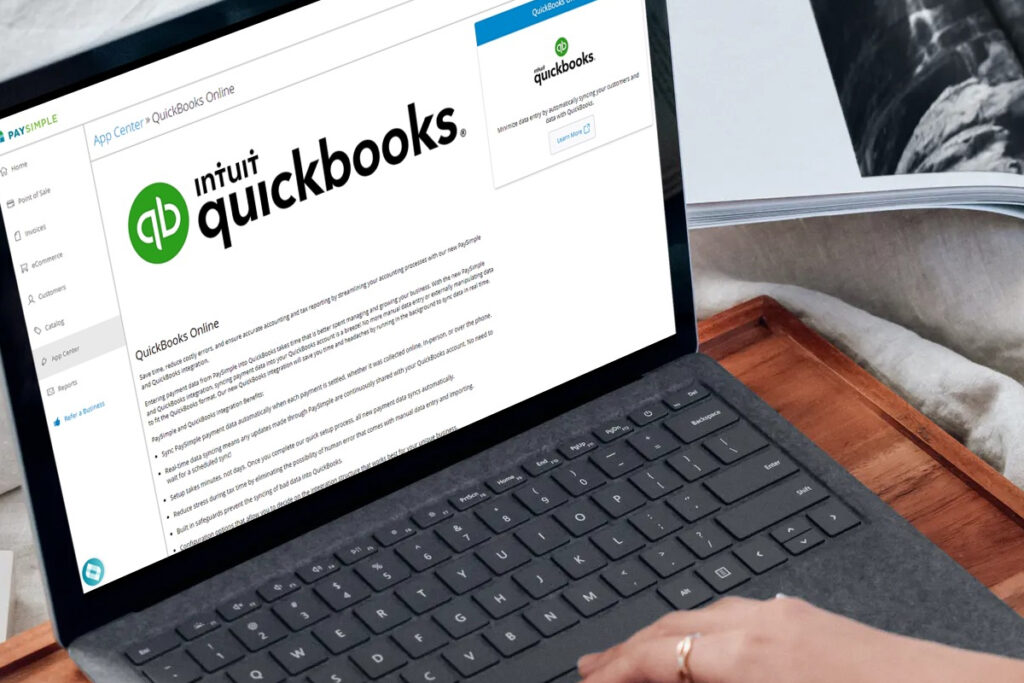How to Set Up QuickBooks for an LLC

Setting up QuickBooks for a Limited Liability Company (LLC) involves several steps to ensure that your financial data is accurately recorded and managed. This comprehensive guide will walk you through the process from the initial setup to managing day-to-day transactions and generating reports.
1. Initial Setup
A. Choosing the Right QuickBooks Version
1. QuickBooks Online vs. QuickBooks Desktop
- QuickBooks Online: Suitable for those who need access from multiple devices and locations. Offers automatic backups and updates.
- QuickBooks Desktop: Suitable for those who prefer a one-time purchase and work primarily from one location. Offers more advanced features for complex accounting needs.
B. Installing QuickBooks
1. System Requirements
Before installing QuickBooks, ensure your system meets the necessary requirements:
- Operating System: Windows 10 or later, macOS 10.15 or later
- Processor: 2.4 GHz minimum
- RAM: 4 GB minimum (8 GB recommended)
- Disk Space: 2.5 GB minimum
2. Download and Install
- Download the installer from the QuickBooks official website.
- Run the installer and follow the on-screen instructions.
- Activate your software with the provided license key.
C. Creating a Company File
1. Launch QuickBooks
Open QuickBooks and select “Create a new company.”
2. Easy Step Interview
- Follow the Easy Step Interview guide.
- Enter your LLC’s name, industry, and type of organization.
- Set your fiscal year start date.
3. Customize Settings
- Go to “Edit” > “Preferences” to customize settings for your LLC, such as accounting method (cash or accrual) and time tracking.
2. Chart of Accounts
A. Understanding the Chart of Accounts
The Chart of Accounts is a list of all accounts used by your LLC to record transactions. It includes assets, liabilities, income, expenses, and equity accounts.
B. Setting Up the Chart of Accounts
1. Default Accounts
QuickBooks provides default accounts based on your industry. Review and modify these as needed.
2. Adding Accounts
- Go to “Lists” > “Chart of Accounts.”
- Click “Account” > “New.”
- Select the type of account (e.g., income, expense).
- Enter the account name and details.
3. Organizing Accounts
- Use account numbers for easy identification.
- Create sub-accounts to categorize expenses (e.g., Utilities > Electricity, Water).
3. Setting Up Company Preferences
A. Company Preferences
1. General Preferences
- Go to “Edit” > “Preferences.”
- Select “General” and customize the settings for your LLC.
2. Accounting Preferences
- Select “Accounting” from the preferences menu.
- Choose your accounting method (cash or accrual).
- Set the first month of your fiscal year.
B. Sales and Expenses Preferences
1. Sales Preferences
- Go to “Edit” > “Preferences.”
- Select “Sales & Customers.”
- Customize settings for sales forms, discounts, and price levels.
2. Expenses Preferences
- Select “Bills & Expenses” from the preferences menu.
- Set preferences for tracking expenses, paying bills, and reimbursable expenses.
C. Payroll Preferences
1. Enable Payroll
- Go to “Employees” > “Payroll Center.”
- Choose “Get Started with Payroll” and select a payroll service plan.
2. Payroll Items
- Set up payroll items for wages, taxes, and deductions.
- Go to “Lists” > “Payroll Item List.”
- Click “Payroll Item” > “New” and follow the Payroll Item Setup Wizard.
4. Setting Up Customers and Vendors
A. Adding Customers
1. Customer Center
- Go to “Customers” > “Customer Center.”
- Click “New Customer & Job” > “New Customer.”
- Enter customer information, including contact details, payment terms, and sales tax code.
2. Custom Fields
- Customize customer fields to capture additional information.
- Go to “Edit” > “Preferences” > “Sales & Customers.”
- Select “Custom Fields” and add new fields as needed.
B. Adding Vendors
1. Vendor Center
- Go to “Vendors” > “Vendor Center.”
- Click “New Vendor.”
- Enter vendor information, including contact details, payment terms, and tax ID.
2. Custom Fields
- Customize vendor fields to capture additional information.
- Go to “Edit” > “Preferences” > “Bills & Expenses.”
- Select “Custom Fields” and add new fields as needed.
5. Managing Inventory
A. Setting Up Inventory Items
1. Item List
- Go to “Lists” > “Item List.”
- Click “Item” > “New.”
- Select “Inventory Part” and enter item details, including name, description, and cost.
2. Reorder Points
- Set reorder points to manage inventory levels.
- Enter the reorder point for each item in the item setup window.
B. Managing Inventory
1. Purchase Orders
- Create purchase orders to reorder inventory.
- Go to “Vendors” > “Create Purchase Orders.”
- Enter vendor information and item details.
2. Receiving Inventory
- Receive inventory against purchase orders.
- Go to “Vendors” > “Receive Items” or “Receive Items and Enter Bill.”
- Enter the received quantity and update inventory levels.
6. Invoicing and Sales
A. Creating Invoices
1. Invoice Form
- Go to “Customers” > “Create Invoices.”
- Select a customer and enter invoice details, including items, quantities, and prices.
2. Customizing Invoices
- Customize the invoice template to match your LLC’s branding.
- Go to “Lists” > “Templates.”
- Select the invoice template and click “Edit Template.”
B. Sales Receipts
1. Creating Sales Receipts
- Go to “Customers” > “Enter Sales Receipts.”
- Enter customer and sales information.
2. Customizing Sales Receipts
- Customize the sales receipt template to match your LLC’s branding.
- Go to “Lists” > “Templates.”
- Select the sales receipt template and click “Edit Template.”
7. Managing Accounts Payable
A. Entering Bills
1. Bill Entry
- Go to “Vendors” > “Enter Bills.”
- Select a vendor and enter bill details, including items, quantities, and amounts.
2. Bill Payment Terms
- Set payment terms for each vendor.
- Enter the due date and any discounts for early payment.
B. Paying Bills
1. Pay Bills
- Go to “Vendors” > “Pay Bills.”
- Select the bills you want to pay and choose the payment method.
2. Print Checks
- Print checks for bill payments.
- Go to “File” > “Print Forms” > “Checks.”
8. Managing Payroll
A. Setting Up Employees
1. Employee Center
- Go to “Employees” > “Employee Center.”
- Click “New Employee.”
- Enter employee information, including contact details, tax information, and payroll items.
2. Payroll Schedules
- Set up payroll schedules to automate payroll processing.
- Go to “Employees” > “Payroll Center” > “Payroll Schedules.”
B. Running Payroll
1. Process Payroll
- Go to “Employees” > “Pay Employees.”
- Follow the prompts to process payroll for your employees.
2. Payroll Taxes
- Manage payroll taxes and file tax forms.
- Go to “Employees” > “Payroll Center” > “Pay Liabilities” and “File Forms.”
9. Financial Reporting
A. Generating Reports
1. Profit and Loss Statement
- Go to “Reports” > “Company & Financial” > “Profit & Loss Standard.”
- Customize the date range and filters as needed.
2. Balance Sheet
- Go to “Reports” > “Company & Financial” > “Balance Sheet Standard.”
- Review your assets, liabilities, and equity.
3. Cash Flow Statement
- Go to “Reports” > “Company & Financial” > “Statement of Cash Flows.”
- Analyze your cash inflows and outflows.
B. Customizing Reports
1. Modify Report Settings
- Open the desired report and click “Customize Report.”
- Adjust the display, filters, and formatting options.
2. Save Customized Reports
- Click “Memorize” to save the customized report settings.
- Access memorized reports from the “Reports” menu.
10. Tax Preparation
A. Income Tax Setup
1. Set Up Tax Accounts
- Go to “Lists” > “Chart of Accounts.”
- Ensure you have the necessary tax accounts, such as income tax payable and income tax expense.
2. Tax Reports
- Generate tax reports for tax preparation.
- Go to “Reports” > “Accountant & Taxes.”
- Select reports such as “Income Tax Preparation” and “Income Tax Summary.”
B. Sales Tax Setup
1. Enable Sales Tax
- Go to “Edit” > “Preferences.”
- Select “Sales Tax” and click “Company Preferences.”
- Choose “Yes” to turn on sales tax.
2. Sales Tax Items
- Set up sales tax items for your jurisdiction.
- Go to “Lists” > “Item List.”
- Click “Item” > “New.”
- Select “Sales Tax Item” or “Sales Tax Group” and enter the details.
3. Sales Tax Codes
- Set up sales tax codes for taxable and non-taxable sales.
- Go to “Lists” > “Sales Tax Code List.”
- Click “Sales Tax Code” > “New” and enter the details.
C. Filing Taxes
1. Sales Tax Filing
- Generate the “Sales Tax Liability” report.
- Go to “Reports” > “Vendors & Payables” > “Sales Tax Liability.”
- Review the report and file your sales tax return.
2. Income Tax Filing
- Use the “Income Tax Preparation” report to gather necessary information.
- Consult with your accountant or tax professional for filing.
11. Backup and Security
A. Regular Backups
1. Scheduled Backups
- Set up automatic backups to prevent data loss.
- Go to “File” > “Back Up Company” > “Create Local Backup.”
- Choose “Options” and set a schedule for automatic backups.
2. Cloud Backups
- Use QuickBooks Online Backup or another cloud service to store your backups securely.
- Ensure your backup data is encrypted and protected.
B. Data Security
1. User Permissions
- Go to “Company” > “Users” > “Set Up Users and Roles.”
- Assign roles and permissions to control access to sensitive data.
2. Password Protection
- Ensure all users have strong passwords.
- Require regular password changes to enhance security.
3. Two-Factor Authentication
- Enable two-factor authentication for an additional layer of security.
- Go to “Company” > “My Company” > “Two-Factor Authentication.”
12. Troubleshooting and Support
A. Common Issues
1. Data File Errors
- Use the “Verify Data” and “Rebuild Data” tools to fix data issues.
- Go to “File” > “Utilities” > “Verify Data” and “Rebuild Data.”
2. Performance Issues
- Optimize file size by archiving old transactions.
- Go to “File” > “Utilities” > “Condense Data.”
B. Getting Help
1. QuickBooks Help
- Access the QuickBooks Help system for guidance.
- Go to “Help” > “QuickBooks Help.”
2. QuickBooks Support
- Contact QuickBooks Support for assistance with technical issues.
- Visit the QuickBooks Support website for help.
3. Community Forums
- Join the QuickBooks Community Forums to connect with other users.
- Visit the QuickBooks Community for tips and advice.
By following these detailed steps and best practices, you can effectively set up QuickBooks for your LLC, ensuring accurate financial records and efficient accounting operations. Regular maintenance, updates, and collaboration with your accountant will help you manage your LLC’s finances efficiently and avoid potential issues.




